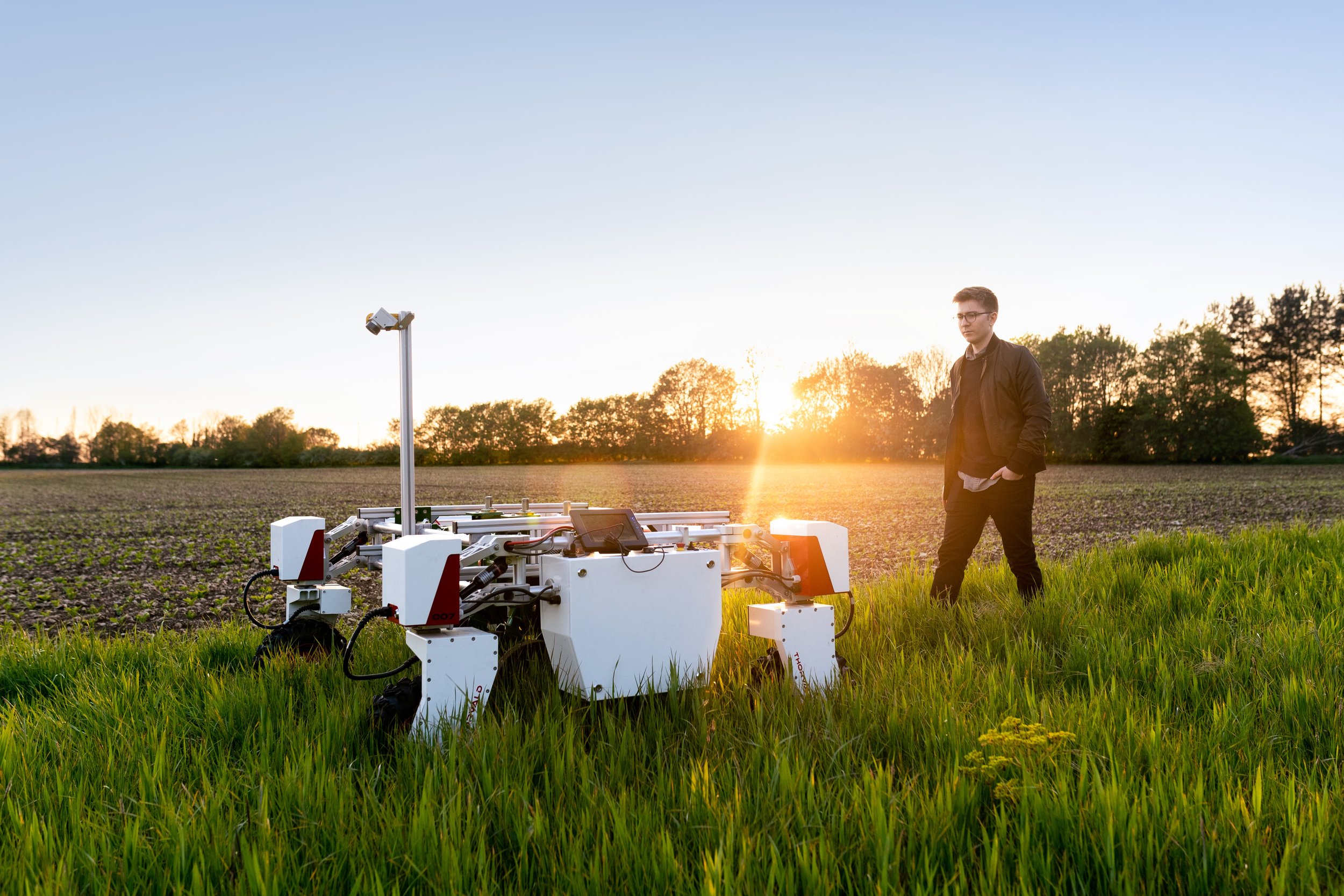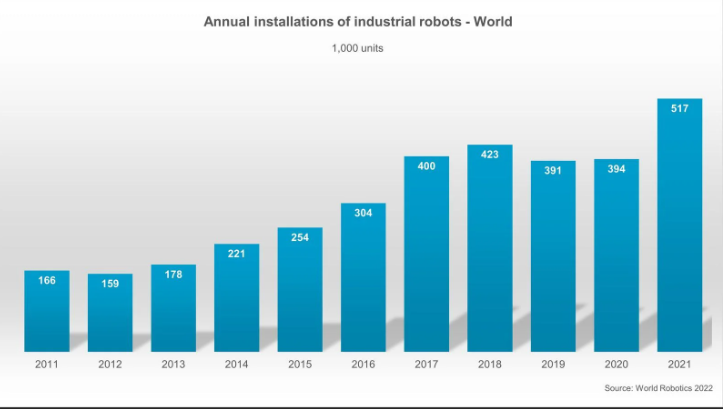By Chris Rawley
Labor shortages and wage inflation are impacting the bottom line of nearly every industry, and agriculture is no exception. Despite continued automation in the industry, agriculture remains a labor-intensive business, with key tasks including planting, weeding, thinning, harvesting, and product transportation across the supply chain. Over the past few decades, the number of people working on farms has decreased by 70% across both family and hired farm workers, exacerbating the problem.
The next step to mitigate labor shortages in farming is robotics. The International Federation of Robotics reports an all-time high of 517,385 new industrial robots installed in 2021 around the world. Installations of robots have grown 31% year-on-year. Around the world today, there are a record 3.5 million robots in the industry.
A host of dynamic start-ups and established players are developing solutions to tackle various aspects of growing and harvesting crops and livestock. Agriculture industry thought leader Mixing Bowl Hub defines crop robots as "machines that use hardware and software to perceive surroundings, analyze data and take real-time action on information related to an agricultural crop-related function without human intervention." The Mixing Bowl, along with Better Food Ventures, the University of California's college of Agriculture and Natural Resources, and The Vine have collaborated to create a graphic of the crop robotics landscape that provides a nice summation of the work being done in this rapidly evolving field.
Robots are becoming more prevalent in the livestock and dairy industries to include animal health and robotic milking installations. Downstream in the supply chain, the food and beverage industry also face severe labor shortages that originated during the COVID-19 pandemic. In this space, robots also help enhance hygiene and food safety and their use has grown 18% globally year-over-year.
Investing in Ag Robotics
Robotics are capital intensive, and producers will face challenges adopting the new technology. Farming as a Service and leasing models will help ag robotics systems gain initial acceptance until direct sales can pick up. Private investment capital can also help, both to spur new technology development in early-stage AgTech companies and to assist early adopting farmers with equipment acquisition.
Pharm Robotics prototype animal health center.




